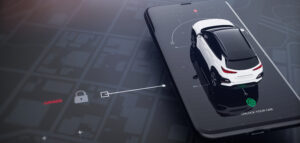When it comes to the transport industry, the technologies which define our driving experience haven’t significantly changed in the last twenty years. However, as network speeds increase, the Internet of Things (IoT) is poised to revolutionise this driving experience in many exciting ways. In this blog, Avneesh Prakash, Vice President – Mobility, Tata Communications, discusses the benefits of implementing IoT for the automotive industry.
While IoT is nothing new to many industries – and has well established use cases across telematics, fleet management, and asset tracking – pervasive connectivity means it can offer so much more to businesses. In fact, IDC predicts that by 2025, there will be 55.7bn connected devices worldwide, 75% of which will be connected to an IoT platform.
Looking to the future of transport, we anticipate that as connectivity becomes more ubiquitous, both on roads and in vehicles, a new connected ecosystem will be created. But how can the automotive sector ensure these innovative solutions are rolled out to consumers in a safe and timely manner?
Connectivity in smart motorways
Allied Research Market forecasts the global electric vehicle market to reach $802.81 billion by 2027. This, along with the widespread adoption of connected vehicles has exposed the urgent need for the automotive industry to create quality services and platforms which support them. Not only this, but different use cases of IoT require different levels of connectivity, resiliency, latency and compute power.
Currently, achieving the levels of connectivity required to enable connected vehicles and roadways to communicate requires a stable, powerful network globally. To achieve this, vehicle manufacturers typically partner with individual Mobile Network Operators (MNOs) for each specific country they want to operate in. However, this results in connected vehicle ecosystems operating over a single network, which is not as efficient as the number of connected devices grow.
Ideally, for vehicle manufacturers to achieve the best possible quality network connections for each connected vehicle, they need access to multiple MNOs, with the real-time intelligence to switch networks for optimum quality of service at any given time and in any given country. This helps their services avoid outages and maintain the best costs and coverage.
“To make the most of MNOs, automotive businesses need a platform such as Tata Communications MOVE™, which can assimilate and aggregate data from a rich variety of sources across devices and the network.”
This data can be used for analytics and applying intelligence on delivering the highest quality of service and next-gen driver experience in any given country, for any use case, in a network and device agnostic manner.
The future of connectivity
When looking at the future of connectivity, next-gen networks are set to lead a significant change as to how the auto industry approaches on-road connectivity.
 Modern vehicles have an array of sensors, location trackers and on-board diagnostics. They gather reams of data that will be sent wirelessly in real time over superfast mobile networks. And not only could this kind of connectivity keep drivers safer and traffic flowing more freely, but it could also reduce pollution and carbon emissions.
Modern vehicles have an array of sensors, location trackers and on-board diagnostics. They gather reams of data that will be sent wirelessly in real time over superfast mobile networks. And not only could this kind of connectivity keep drivers safer and traffic flowing more freely, but it could also reduce pollution and carbon emissions.
For instance, by providing real-time access to service logs and telematics, service centres will be able to see a car’s full diagnostics instantly and remotely. This means they will also be able to predict breakdowns and pre-empt maintenance. By addressing smaller issues remotely, vehicle problems are resolved before they lead to issues requiring costly solutions.
“In the case of a more damaging breakdown or crash, faster connectivity enables drivers to make an emergency call (eCall) or breakdown call (B-call), ensuring urgent assistance is provided – all underpinned by real-time data.”
Finally, having a more powerful network speed means that software errors and patches will no longer be a problem – as cars will be able to receive over-the-air software updates to maintain the vehicle software.
The smart motorway ecosystem
However, connectivity on highways has much more potential than just on-board software. Smart highways are set to become entire connected ecosystems. We are gradually moving towards a driving experience controlled by IoT, and technology will surely help roads to become more cost-effective, safer, and more sustainable.
Next-gen networks are encouraging the rise of sensors and smart devices which, when combined, can allow real-time interaction between the road infrastructure and the vehicles that use it. Telematics technology could become central to solving some of our biggest challenges as a result of urbanisation, provide relief to congested transport infrastructure, and improve the environment.
As access to expanded and more powerful connectivity grows – and costs decrease as this technology matures – every connected device holds an enormous potential to collect and transmit relevant data to the connected vehicles during the journey and convey actionable insights back to the vehicle.
In turn, this data can be used to improve customer service and create more efficient vehicle operations. Overall, this would give rise to new automotive manufacturing standards, create greater operational efficiency, and provide elevated driving experience to the consumers.
“Ultimately, by understanding and addressing customer needs on a deeper level than ever before, brands could become much more than just a badge on the front of the bonnet or a third-party logo on the dashboard’s touchscreen – they could help to revolutionise the driving experience for millions in a cost-effective and sustainable manner.”
With the proliferation of electric vehicles and augmentation in the connected automobiles, the future of transport and connectivity are intertwined It’s an exciting space to watch with fast-moving developments and new innovations that are poised to revolutionise how we think about transport – and our experience of driving.
To learn more about IoT implementation in industries, read this blog.
Transformational Hybrid SolutionsOur cloud-enablement services offer the best performance on your traffic-heavy websites or mission-critical applications.
Core NetworksTata Communications™ global IT infrastructure and fibre network delivers the resources you need, when and where you need them.
Network Resources
Unified Communications As A ServiceBreak the barriers of borders efficiently and increase productivity with Tata Communications’ UC&C solutions.
Global SIP ConnectEmpower your business with our SIP network and witness it grow exponentially.
InstaCC™ - Contact Centre As A ServiceCloud contact centre solutions for digital customers experience and agent productivity.
Unified Communication Resources Case studies, industry papers and other interesting content to help you explore our unified communications solution better.
IoT SolutionsThe Internet of Things is transforming the way we experience the world around us for good. Find out more about our Internet Of Things related solutions here.
Mobility SolutionsTata Communications’ mobility services enable your enterprise to maintain seamless communication across borders, with complete visibility of cost and usage.
Mobility & IoT Resources
Multi-Cloud SolutionsWith enterprises transitioning to a hybrid multi-cloud infrastructure, getting the right deployment model that yields ROI can be a daunting task.
Cloud ComplianceCompliant with data privacy standards across different countries and is also designed to protect customers’ privacy at all levels.
IZO™ Cloud Platform & ServicesIZO™ is a flexible, one-stop cloud enablement platform designed to help you navigate complexity for more agile business performance.
Managed Infrastructure ServicesIntegrated with our integrated Tier-1 network to help your business grow efficiently across borders.
Cloud PartnersWe support a global ecosystem for seamless, secure connectivity to multiple solutions through a single provider.
Cloud Resources
Governance, Risk, and ComplianceRisk and Threat management services to reduce security thefts across your business and improve overall efficiencies and costs.
Cloud SecurityBest-in-class security by our global secure web gateway helps provide visibility and control of users inside and outside the office.
Threat Management - SOCIndustry-leading threat-management service to minimise risk, with an efficient global solution against emerging security breaches and attacks.
Advanced Network SecurityManaged security services for a predictive and proactive range of solutions, driving visibility and context to prevent attacks.
Cyber Security ResourcesCase studies, industry papers and other interesting content to help you explore our securtiy solution better.
Hosted & Managed ServicesTata Communications provide new models for efficient wholesale carrier voice service management. With our managed hosting services make your voice business more efficient and better protected
Wholesale Voice Transport & Termination ServicesYour long-distance international voice traffic is in good hands. End-to-end, voice access & carrier services which includes voice transport and termination with a trusted, global partner.
Voice Access ServicesTata Communication’s provide solutions which take care of your carrier & voice services, from conferencing to call centre or business support applications.
Carrier Services Resources
CDN Acceleration ServicesOur CDN Web Site Acceleration (WSA) solution helps deliver static and dynamic content, guaranteeing higher performance for your website.
CDN SecuritySafeguard your website data and customers’ information by securing your website from hacks and other mala fide cyber activities.
Video CDNDeliver high-quality video content to your customers across platforms – website, app and OTT delivery.
CDN Resources
Elevate CXIncrease customer satisfaction while empowering your service team to deliver world-class customer experience and engagement.
Live Event ServicesTata Communications’ live event services help battle the share if eyeballs as on-demand video drives an explosion of diverse content available on tap for a global audience.
Media Cloud Infrastructure ServicesTata Communications’ media cloud infrastructure offers flexible storage & compute services to build custom media applications.
Global Media NetworkTata Communications’ global media network combines our expertise as a global tier-1 connectivity provider with our end-to-end media ecosystem.
Use CasesUse cases of Tata Communications’ Media Entertainment Services
Remote Production SolutionsMedia contribution, preparation and distribution are highly capital-intensive for producers of live TV and video content, and their workflows are complex.
Media Cloud Ecosystem SolutionsThe Tata Communications media cloud infrastructure services offer the basic building blocks for a cloud infrastructure-as-a-service.
Global Contribution & Distribution SolutionsTata Communications’ global contribution and distribution solution is built to reduce capital outlay and grow global footprint.
Satellite Alternative SolutionsAs more and more consumers choose to cut the cord & switch to internet-based entertainment options, broadcasters are faced with capital allocation decisions.
LeadershipA look into the pillars of Tata communications who carry the torch and are living embodiment of Tata’s values and ethos.
Culture & DiversityHere at Tata Communications we are committed to creating a culture of openness, curiosity and learning. We also believe in driving an extra mile to recognize new talent and cultivate skills.
OfficesA list of Tata Communications office locations worldwide.
FAQCheck out our FAQs section for more information.
SustainabilityOur holistic sustainability strategy is grounded in the pillars of People, Planet and Community with corporate governance at the heart of it.
BoardHave a look at our board of members.
ResultsFind out more about our quarterly results.
Investor PresentationsFollow our repository of investor presentations.
FilingsGet all information regarding filings of Tata communications in one place.
Investor EventsAll investor related event schedule and information at one place.
GovernanceAt Tata, we believe in following our corporate social responsibility which is why we have set up a team for corporate governance.
SharesGet a better understanding of our shares, dividends etc.
SupportGet all investor related contact information here.


